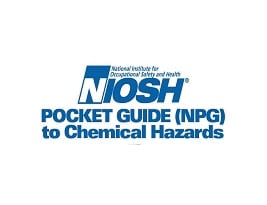Toluene

Overview
CAS No. 108-88-3
Toluene (C₆H₅CH₃) is a colorless liquid with a sweet, pungent odor. Exposure to toluene can cause eye and nose irritation, tiredness, confusion, euphoria, dizziness, headache, dilated pupils, tears, anxiety, muscle fatigue, insomnia, nerve damage, inflammation of the skin, and liver and kidney damage. Workers may be harmed from exposure to toluene. The level of exposure depends upon the dose, duration, and work being done.
Toluene is used in many industries. It’s used in paints, dyes, solvents, fingernail polish, and gasoline. Some examples of workers at risk of being exposed to toluene include the following:
- Workers in locations where there are leaking underground gasoline storage tanks
- Technicians who work in nail salons
- Construction workers who use paint, adhesives or solvents
- Workers involved with the production of gasoline
NIOSH recommends that employers use Hierarchy of Controls to prevent injuries. If you work in an industry that uses toluene, please read chemical labels and the accompanying Safety Data Sheets for hazard information. Visit NIOSH’s page on Managing Chemical Safety in the Workplace to learn more about controlling chemical workplace exposures.
The following resources provide information about occupational exposure to toluene. Useful search terms for toluene include “methyl benzene,” “methyl benzol,” “phenyl methane,” and “toluol.”
NIOSH Chemical Resources
Related NIOSH Resources
- NIOSHTIC-2 search results on toluene– NIOSHTIC-2 is a searchable database of worker safety and health publications, documents, grant reports, and journal articles supported in whole or in part by NIOSH.
- NMAM: TOLUENE in Blood 8007
- NMAM: o-Cresol in urine, 8321
- NMAN: S-Benzylmercapturic acid and S-phenylmercapturic acid in urine 8326.
Selected Publications
- NIOSH Criteria for a Recommended Standard: Occupational Exposure to Toluene DHHS No. 73-11023 (1973)
- NIOSH Occupational Health Guideline for Toluene
- NIOSH Volatile Organic CPDS (Screening) (No. 2549)
- NIOSH PUB: Toluene Diffusive sampler, No. 4000
- NIOSH Immediately Dangerous to Life or Health Concentrations (IDLH): Toluene
- NIOSH Hydrocarbons, Aromatic, No. 1501
- NIOSH Worker Notification Program: Shoe Manufacturers
Related Resources
- Agency for Toxic Substances and Disease Registry (ATSDR): ToxFAQs™ for Toluene
- ATSDR’s Medical Management Guidelines: Toluene
- ATSDR Toxicological Profile for Toluene
- EPA Acute Exposure Guideline Levels: Toluene
- EPA Air Toxics: Toluene
- EPA Chemistry Dashboard
- EPA’s OPPT Chemical Fact Sheet: Toluene
- EPA Consumer Fact Sheet Ground and Drinking Water: Toluene
- EPA Integrated Risk Information System: Toluene
- NLM Hazardous Substance Data Bank: Toluene
- NLM Haz-Map: Toluene
- NLM (Household Products Database): Toluene
- OSHA Hazard Communication
- OSHA Safety and Health Topics: Toluene
- New Jersey Hazardous Substance Fact Sheets: Toluene
International Resources
- ILO Safety Data Sheets: Toluene
- Canadian Centre for Occupational Health and Safety: Toluene
- European Chemical Agency: Toluene
- GESTIS Substance Database: Toluene
- IPCS INCHEM Toluene Datasheet
- OECD Global Portal to Information on Chemical Substances: Toluene
- WHO (Environmental Health Criteria 52): Toluene



